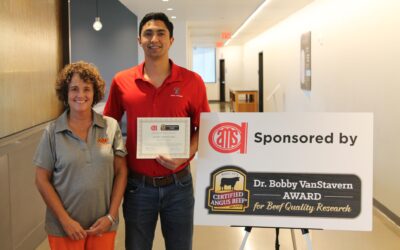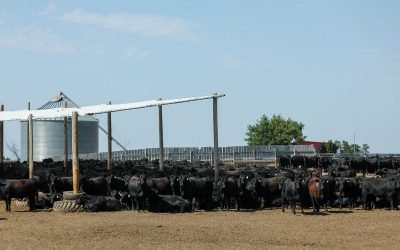These doctors have a new prescription
Looking for ways to reduce phosphorus runoff from manure application, he applied it at varying depths. Yield monitors, grid soil sampling and GPS guidance helped chart results.
Ever since, I’ve generally tied precision ag squarely to row-crop farming.
But it doesn’t have to be.
I recently wrote an article on precision backgrounding. It was especially fun because I got to talk to my former animal science professor, Dr. Kelly Bruns, now at the University of Nebraska, and to a legend from my alma mater, South Dakota State University, Dr. Robbi Pritchard.
“Today the genetics are better; they’re going to help us a lot. Our growth enhancement tools are better, and we know a lot more about them,” Pritchard says.
In general, calving seasons are tighter than they used to be, so there’s not quite the same need to even cattle out.
Growth genetics have become more common. “If [calves] are coming out of 1,600-lb. cows, they probably don’t need any implants. The DNA is there. The implants just fill in for a lack of DNA,” he says.
Marbling has improved at the same time.
“In the old days to get quality grade, they had to be older,” Pritchard says. “It used to be an adage that calf-feds couldn’t grade. That doesn’t exist anymore.”
Do you background your own calves? Have you changed their diet, days in the program or implants to adjust for improvements in genetics? If you buy grass cattle, chances are you are not growing the same type of cattle you did 10 or 20 years ago.
It might be time for a new prescription.
Smaller to moderate-frame cattle need a more aggressive implanting program than the larger frames. It’s also important to consider final marketing method.
“If we choose to use an implant, are we matching the correct level of the implant, such as low, medium or high potency to what their rate of gain is?” Bruns asks. “Going back to all our previous marbling work, if we use too high potency of an implant and don’t match it up with a high enough caloric diet, we could impede marbling.”
Pritchard says wheat and low-quality forage are meant for commodity cattle. If you want a premium carcass, that 5- to 8-month window is critical.
“If I rough them too much during backgrounding, I’m going to give up the marbling. I’ll get a bunch of carcass weight but I won’t get the marbling.”
As a general rule, early weaning is best for large-framed cattle, and creep feeding “fits best just to fill in the nutritional gaps,” he says.
It might be time to evaluate cattle and select a program based on their genetic potential. A little precision might be just what the doctors ordered.
May your bottom line be filled with black ink,
Miranda
You may also like
Certified Angus Beef Recognizes Beef Quality Research
First-place honors go to Andres Mendizabal, an international student pursuing a Ph.D. in animal science at Texas Tech University. His research is titled, “The Accuracy of USDA Yield Grade and Beef Carcass Components as Predictors of Red Meat Yield.”
Not all good days are sunny and warm
Stress of any kind affects performance and health, but also well-being and behavior, a special focus for CSU animal scientist Lily Edwards-Callaway. Her team’s literature review found shade benefits vary by location, structure type and the weather.
Progress from small steps
Every day is a chance to learn and get better. Thousands of others like my new friends in Alabama are taking steps to meet the shifts in consumer demand, and to know more. Small steps in the right direction can start now. Even if it’s just recording a snapshot of where you are today, a benchmark for tomorrow.





